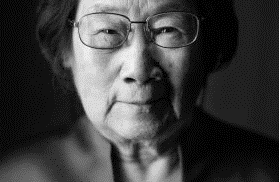Posts Tagged ‘International Day of Women and Girls in Science’
International Day of Women and Girls in Science. By Our Student Pharmacist, Ruba Lahoud.
In the month of February, there is one special day that really celebrates women. No, I am not talking about Valentine’s Day!
Any guesses?
Well, I am referring to the International Day of Women and Girls in Science that takes place on February 11 every year! It is a great day to recognize women’s significant achievements in science and place a much-needed focus on girls entering Science, Technology, Engineering, and Mathematics (STEM) careers.
History of women in STEM:
Throughout history, women have been underrepresented in STEM careers. Recent studies have found that women in STEM fields publish less, are paid less for their research, and do not progress as far as men in their careers.
According to UNESCO statistics, here are some powerful insights into why the work towards gender equality in the STEM fields must be a priority:
- There have been 572 male Nobel Prize winners in physics, chemistry and medicine since Marie Curie in 1903 and only 17 women have won this title.
- Only 28% of global researchers are women.
- In the US, 39% of women take part in advanced courses in physics and math, compared to 61% of men.
- On a global average, when it comes to higher education in engineering and construction, the ratio of women to men is 27:73.
In 2015, the United Nation (UN) adopted a resolution to raise awareness of the bias that exists against women in STEM fields and to put an end to it. Women are fully capable of making important contributions in science.
Important Women in Science
Let’s take a look at some of the most pivotal women in the field.
- Elizabeth Garrett Anderson (1836-1917)
- As a British physician, not only did she serve her patients, but she also was an advocate for women to be admitted into institutes for education, especially medicine.
- She was the first Englishwoman to become a doctor, obtaining her degree from the University of Paris.
- Marie Curie (1867-1934)
- She received her first Nobel Prize in 1903 for discovering the radioactive elements radium and polonium and her second Nobel Prize in 1911 for producing radium as a pure metal.
- Irene Joliot-Curie (1897-1956)
- Won a Nobel Prize in 1935 for discovering artificial radioactivity.
- Gerty Cori (1896-1957)
- Won a Nobel Prize in 1947 for providing insight into glycogen and glucose metabolism.
- Dorothy Crowfoot Hodgkin (1910-1994)
- Won a Nobel Prize in 1964 for determining the crystal structures of penicillin and vitamin B-12.
- Rita Levi-Montalcini (1909-2012)
- Won a Nobel Prize in 1986 for investigating how the nervous system works and develops.
- Linda Buck (1947-)
- Won a Nobel Prize in 2004 for discovering how our sense of smell works.
- Françoise Barré-Sinoussi (1947- )
- Won a Nobel Prize in 2008 for discovering the human immunodeficiency virus (HIV).
- Tu Youyou (1930- )
- Won a Nobel Prize in 2015 for discovering a novel therapy against malaria.
Why is the International Day of Women and Girls in Science important?
It is a time to honor, appreciate, and share in the successes of women who have gone before us making significant contributions worldwide.
In addition, this day allows us to educate men on their role in encouraging and mentoring women in the workplace to pursue their technical and scientific passions.
Resources:
https://www.unwomen.org/en/news/in-focus/international-day-of-women-and-girls-in-science
https://www.nobelprize.org/women-who-changed-the-world/
http://uis.unesco.org/en/topic/women-science











